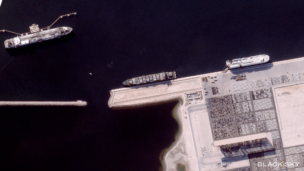British space-based infrared mapping startup SatVu has partnered with Japan industrial company IHI Corporation to develop a high-res thermal infrared satellite constellation.
The two companies are expected to sign an MOU at the DSEI UK defense conference in London on Wednesday. The goal is to “define requirements” for a sovereign constellation that would enhance Japan’s national security and “explore optimal business structures for building and operating the constellation in Japan,” the companies said in a statement.
“It’s an early but vital step—making sure the capability is designed in a way that delivers maximum value to Japan, while also strengthening UK–Japan cooperation in space,” SatVu CEO Anthony Baker told Payload.
The fine print: The smallsat constellation, which would likely be manufactured in Japan, would fall under a larger endeavor spearheaded by IHI to build out other types of EO satellite sensors. As part of this larger goal, IHI announced a SAR constellation development partnership with ICEYE in May, and is expected to also announce a collaboration with Surrey Satellite Technology this week on the sidelines of the conference.
The MOU is part of the strategic partnership known as the Hiroshima Accord, a 2023 agreement governing cooperation in technology, security and the economy between the Japan and UK governments.
“This MoU is the first step in building the sovereign capability of thermal infrared, [which is] critical to Japan’s national security in the years to come,” Atsushi Sato, president of IHI’s aero engine, space and defense business area, said in the statement.
Context: SatVu launched its first satellite, HOTSAT-1, in 2023, promising to revolutionize thermal imaging from space. The satellite’s first images, released in October that year, revealed thermal structures on Earth’s surface with a resolution of 3.5 meters, making it possible to discern the movements of locomotives or map thermal profiles across dense urban areas in unprecedented detail.
HOTSAT-1 failed after six months in orbit, according to SpaceNews, due to a power circuit glitch affecting its infrared camera. The results of the early imaging campaign sparked intense interest, helping SatVu raise additional funding for successor satellites HotSat-2 and HotSat-3, slated for launch in 2026.




